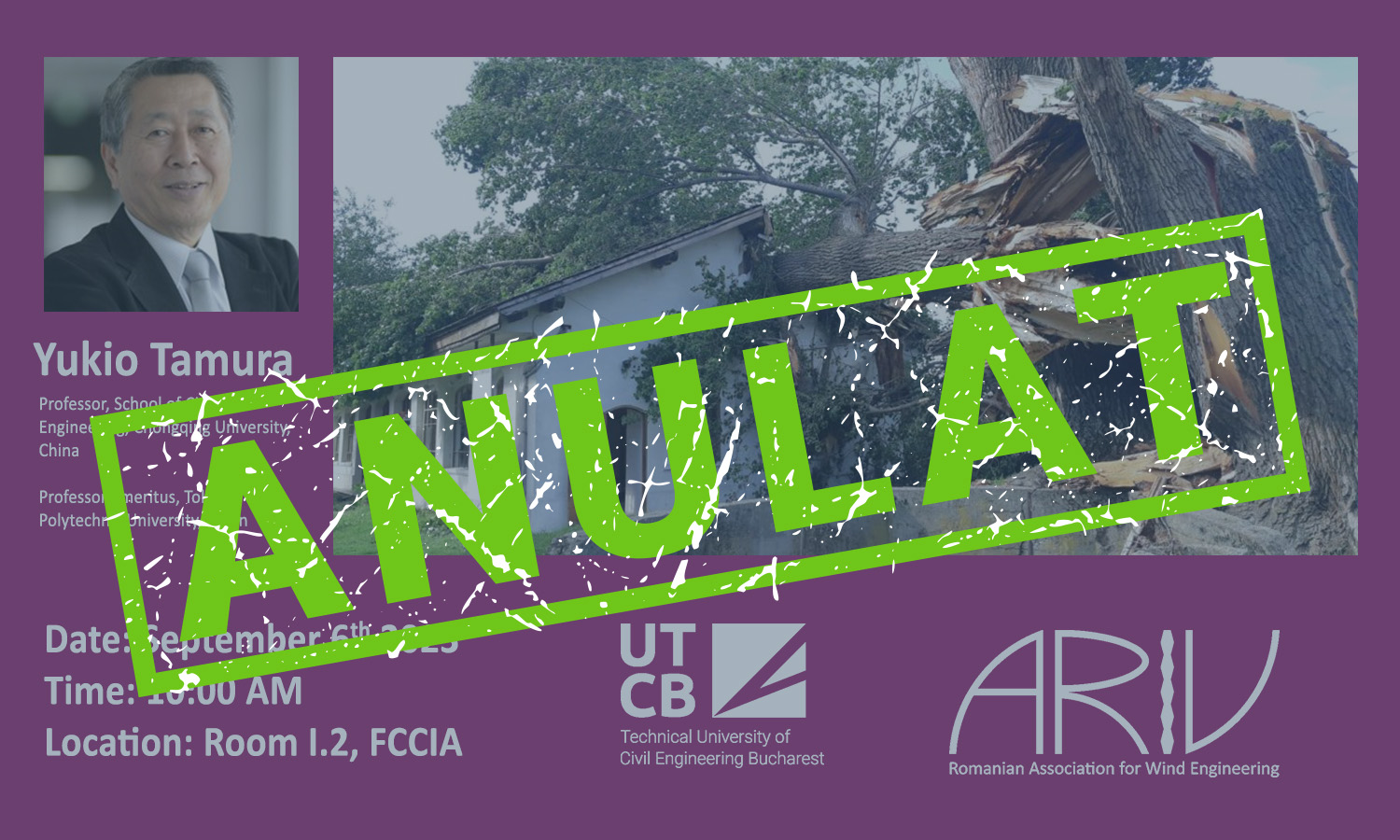Acest eveniment a fost anulat – Wind-related Disaster Risk Reduction Introduction to Structural Wind Engineering

ARIV și UTCB organizează o prelegere în domeniul ingineriei vântului, miercuri, 6 septembrie
Asociația Română de Ingineria Vântului (ARIV) împreună cu Universitatea Tehnică de Construcții București (UTCB) vă invită miercuri, 6 septembrie 2023, să participați la prelegerea intitulată „Wind-related Disaster Risk Reduction. Introduction to structural Engineering”, eveniment susținut de domnul Profesor Yukio Tamura. Evenimentul va avea loc începând cu ora 10:00, în sala I.2, la sediul Facultății de Construcții Civile Industriale și Agricole.
Yukio Tamura este profesor la School of Engineering, Chongquing University, Chongquing, China și profesor emerit la Tokyo Polytechnic University, Tokyo, Japonia. Mai multe informații despre biografia domnului Profesor Yukio Tamura pot fi consultate aici: http://wind.arch.t-kougei.ac.jp/system/eng/contents/code/tamura.
Prelegerea este deschisă tuturor celor interesați de domeniul ingineriei vântului și ingineriei civile în general și va fi susținută în limba engleză. Invităm audiența interesată să parcurgă abstractul prelegerii mai jos.
Extreme wind events such as typhoons and tornadoes can cause devastating damage to structures and huge losses to human societies. This lecture first introduces the causes of damage to buildings and structures due to various types of winds, including extremely strong winds, medium-level winds and daily winds. Meteorological features, damage details and failure mechanisms of structures, factors related to damage generation and spread, and so on are discussed, with the aim of reducing future wind-related disaster risks and to create safer and sustainable societies. Regarding devastating wind-induced disasters due to tropical cyclones, the importance of combined effects of wind and water hazards is emphasized. It also points out human errors hidden in damage scenarios, especially for large buildings. Lessons derived from aerodynamic effects, cladding and component performances, debris impacts, building arrangements, fatigue effects, construction methods and so on together with suggestions for wind-resistant design of buildings are given. Various mitigation measures for wind-induced responses of buildings and structures, state-of-the art techniques in the wind engineering fields including data-base-assisted design, CFD simulations, and so on are also introduced. Finally, to cope with the future increasing trend of wind-related disasters, the importance of full-scale storm simulators is emphasized.
